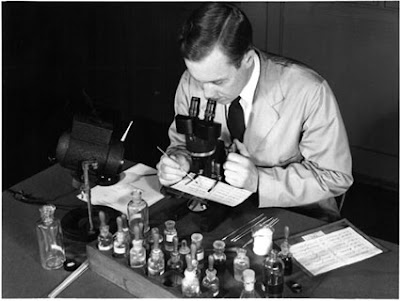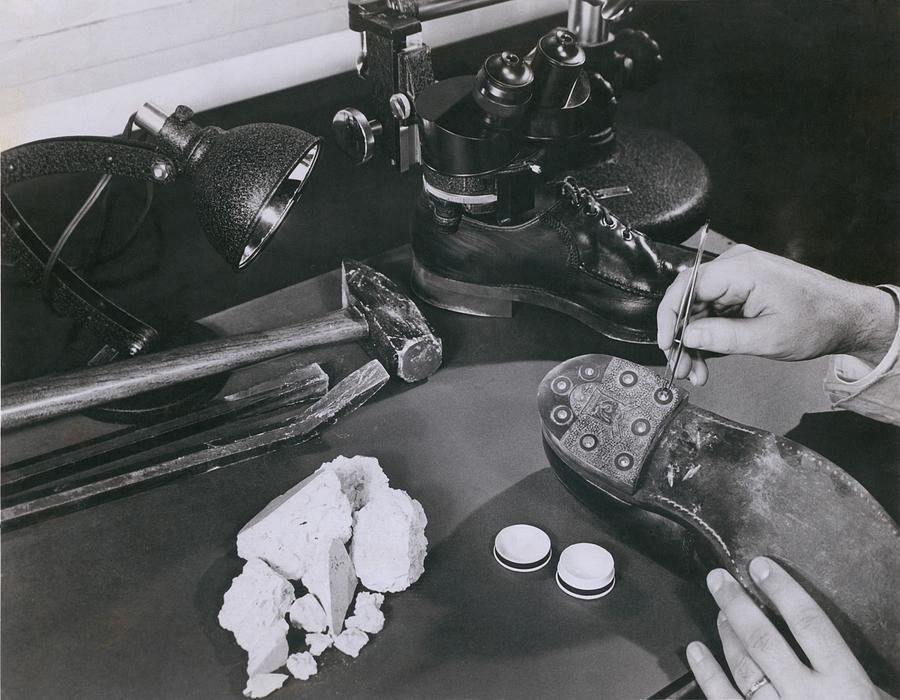THE murderous old adage, "Dead men tell no tales," is no longer true, if it ever was so. Belief in it has doubtless been responsible for a long and bloody catalog of deaths, and many a modern assassin has acted on it, only to find, in many cases, that he has been leaning on a broken reed. Dead men, to be sure, are not as voluble as live ones, but the tales that they do tell are not to be gainsaid. To-day, writes Davina Waterson in The Alienist and Neurologist, an assassin has to reckon with the physicist, the chemist, and the Roentgenologist, who force him to face damning, dispassionate scientific facts, and with equal zeal these facts are used to clear the innocent man condemned by circumstantial evidence. — Unsigned, "The Tales That Dead Men Tell," THE LITERARY DIGEST (December 26, 1914)Among the instances the article discusses are cases of apparent murder proven or disproven by blood crystallization, by a test for the age of blood stains, by matching callosities on a victim's hand with his walking stick, by blood serum after an apparent death by fire, and by gases betraying the presence of the corpse.
And what about cases that seemed to be apparent suicides:
"Now, if a man is found shot through the head and with a pistol in his hand, what more rational than a verdict of suicide? But in real suicide the weapon is held so firmly that force is required to dislodge it. It seems as if the muscular spasm persists until rigor mortis occurs and sets it. Several experts have tried to make the hand of a corpse grip a weapon, but have never succeeded, and their knowledge of this fact has often opened the avenue to detection of murder. Again, if you found your grandfather on the floor with a rope round his neck and the other end dangling from a nail in the wall, certainly you would say that he had hanged himself and his weight had broken the rope.
"But the medicolegalist is as well up in knots as a sailor and knows a suicide will tie them one way, a murderer another. There was a case in Paris of a grandfather who had, apparently, hanged himself in the manner described. But he had not tied the rope, declared the expert, and, in face of such uncanny knowledge, two neighbors confest they had from their window seen the son-in-law strangle his father and arrange the other piece of rope. . . ."
"Lynx-eyed Science is rendering it ever more difficult to dispose of a body or hide the crime of murder. Human blood and hair and bones have characteristics distinctly their own. The 'gory knife' of melodrama is no longer sufficient to fix a crime, and even if, as seems possible, the penny novelist should kill his hero with radium, why, the physicist would come along with the electroscope and with it absolutely refute or conflrm the accusation." — "The Tales That Dead Men Tell," op. cit.Category: Detective fiction


No comments:
Post a Comment